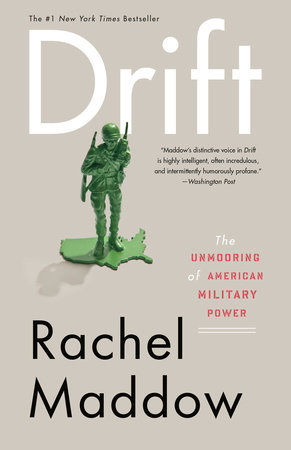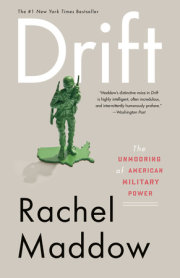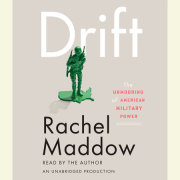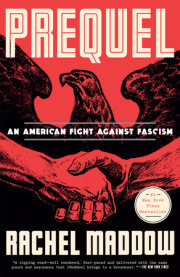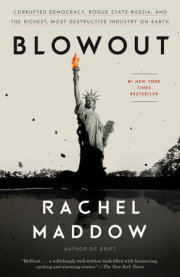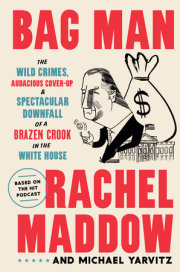Chapter 1
G.I. Joe, Ho Chi Minh, and the American Art of Fighting About Fighting
thomas jefferson was a lifelong and habitual fretter. He was wary of animal foods, spirituous liquors, state religion, national debt, abolitionists, embittered slaves, unelected federal judges, Yankee politicians, Yankee professors, and Yankees in general. But his predominant and animating worry was the centralization and consolidation of power—in large banks, in closed and secret societies, and, most of all, in governments: the enemy within. “There are instruments so dangerous to the rights of the nation and which place them so totally at the mercy of their governors, that those governors, whether legislative or executive, should be restrained from keeping such instruments on foot, but in well-defined cases,” Jefferson wrote as the Constitution of the United States was being debated. “Such an instrument is a standing army.”
His feelings didn’t much change with time. In 1792 he wrote, “One of my favorite ideas is, never to keep an unnecessary soldier.” In 1799 he wrote to a political friend that he was “not for a standing army in a time of peace, which may overwhelm public sentiment.”
Classicist that he was, Jefferson was apt to bolster his arguments with well-polished (if not strictly accurate) examples of early Western history: “The Greeks and Romans had no standing armies, yet they defended themselves.... Their system was to make every man a soldier and oblige him to repair to the standard of his country whenever that was reared. This made them invincible; and the same remedy will make us so.”
That’s at best a loose military history of Greece and Rome—they did rely at times on standing armies. But you see where he’s going with this. Jefferson acted on his pet “unnecessary soldier” idea when he became president in 1801. He cut the standing army by a third and left the defense against foreign invasion largely to a “well-regulated militia” under the control of the various states and localities. And he remained unmoved by what he viewed as alarmist and cynical calls for a large nationalized active military. “Were armies to be raised whenever a speck of war is visible in our horizon,” he warned Congress in his sixth annual presidential message, “we never should have been without them. Our resources would have been exhausted on dangers which never happened, instead of being reserved for what is really to take place.”
Jeffersonian prudence held sway in this country for a century and a half. The professional military was an institution of limited reach and power; in times of peace we kept the regulars busy building defense works and ports and bridges. Whenever we went to war in a big way, we went to war with citizen-soldiers; the small nucleus of an active-duty army swelled with militiamen, reservists, National Guardsmen, enlisted persons, and draftees. When the United States went to war, the entire United States went to war. And no nation’s military demobilized with such verve and velocity when the fighting was over. Hell, volunteers on the battlefields were legally separating themselves from the US Army while the Mexican War still raged in 1847. The War of 1812, the Creek War, the Civil War, the Spanish-American War, they were all the same: the clarion call to duty, the citizens’ eager answer, the victory parades (having picked our fights judiciously, we were, by the mid-twentieth century, something like 9–0), and the return to home and hearth. Within eighteen months of the conclusion of World War I, Congress had completely dismantled the American Expeditionary Forces and reduced the active-duty military from four million soldiers back to the prewar number of less than three hundred thousand. The effect of tossing more than three million suddenly unemployed men back into an ailing job market did not have an altogether sanguinary effect on the national economy, or on the national mood...but hey, nobody ever said war was supposed to be a jobs program.
Mobilization for World War II was even larger, and the postwar drawdown nearly as dramatic. In 1945 there were twelve million people on active duty in the US Armed Forces; five years later, that number had dropped 88 percent, to just one and a half million. But that stunning demobilization had few concomitant dislocations. Call it the War-and-Peace Dividend or the World’s Greatest Stimulus Package. A country that left a Great Depression at home to confront the Axis powers overseas converted the massive government spending of the war effort into an unprecedented civilian economic boom when that war was won. Factories that had been making jeeps and warplanes and submarine engines and ammunition were now turning out new Chevrolet Bel Airs, Allis-Chalmers tractors, Cessna 170 airplanes, and Frigidaire iceboxes. It didn’t hurt our standing in the world economy that about one in five able-bodied young men in Germany and the Soviet Union had been killed in the war, and at least one in ten in Japan. And it didn’t hurt that the industrial cities of Japan and Germany (and much of Western Europe, for that matter) were smoking holes; of the 10.5 million cars manufactured worldwide in 1950, the United States made more than 8 million of them, and sold ’em all over the world.
We were a country that could afford to be generous to our returning veterans, and more than sixty years later we’re still reaping the benefits of that generosity. The post–World War II GI Bill assured returning vets a year’s worth of wages whether they worked or not, and paid college tuition and a living stipend, too. Nearly half of the male students on college campuses in 1948 had been to war. The bill also offered low-interest government-guaranteed loans for buying a home. Housing construction and manufacturing boomed. The curve of GNP, household income, and personal spending trended up, up, and up.
The United States of America was a robust nation—a nation of means—and we rebuilt and reconfigured our institutions after World War II in a way that reflected this. Yes, the military demobilization after the war was massive and fast, but even the dramatically shrunk-down US military of 1950 was three times the size it had been before World War II—and with a big footprint. The US soldiers, sailors, airmen, and Marines, right alongside all those consumer goods, were already leading exports. We had 150,000 troops in the Far East, 125,000 in Western Europe, and a smattering in such diverse and far-flung locations as Panama, Cuba, Guatemala, Morocco, Eritrea, Libya, Saudi Arabia, Samoa, and Indochina. Wary as never before of the Communist threat—now a constant “speck of war visible in our horizon”—America had come to see Jefferson’s preoccupation with standing armies and threats from inside our own power structure as a bit moldy. We were, after all, the only country still capable of keeping the planet safe for democracy.
Through the fifteen years that followed World War II, we trusted our commanders in chief—Truman, Eisenhower, Kennedy, they’d all served!—to project our military power in measured and meaningful ways. We ratcheted up our extraordinary nuclear program, broke a Soviet blockade of Berlin with a dramatic airlift, beat the Commies back in Formosa and Thailand, fought them to a standstill in Korea, and stared down Khrushchev when our spy planes caught him red-handed putting missiles in Cuba. When President Kennedy decided to engage the Soviets in the space race, the nation’s finest military pilots were the chosen first team.
The United States military was an institution of unsurpassed public esteem, top to bottom. You could measure that regard in a hundred different ways. Take, for instance, the plaything metric. In 1964 one of the hottest new toys on the market was a doll, for boys: G.I. Joe.
There was not a whiff of peacetime, soon-to-be civilian in this toy; these were not Ken dolls in dress uniforms at the debutante ball. G.I. Joe was olive drab, M1 rifle, canned Spam, scar-faced, down-and-dirty. The hard-plastic soldiers (petroleum-based all the way) were built to take a pounding. In the spring of 1965, in GI Bill–built suburbs from Levittown, New York, to Castro Valley, California, ten-year-old boys were digging miniature foxholes and jerry-rigging Dad’s old handkerchiefs to make paratroopers out of their new dolls. Hasbro had an instant hit; G.I. Joe did close to $20 million in sales that first year. Early indications pointed to steady growth.
But sales reports later in the ’60s made for unhappy reading in the Hasbro boardroom, and by the early 1970s the toy company found itself leaning on gimmicks to sell G.I. Joe. These included fuzzy flocked hair (they called it “realistic”), a nonregulation beard, colorful new uniform choices, swiveling “Eagle-Eyes,” and a fighting hand formed into a “Kung Fu Grip” (Bruce Lee had taken off by then). Hasbro folded G.I. Joe into “The Adventure Team...ready to go wherever adventure leads.” The company was at pains to minimize the militaryness of its military doll.
You can’t blame the Hasbro marketers and their sell-side analysts for having been optimistic in those first heady months of 1964. They were sure they were riding the long wave of good feeling for US soldierdom. How could they have known that the ground under G.I. Joe was beginning to shift, even in the happy springtime of his advent?
Copyright © 2012 by Rachel Maddow. All rights reserved. No part of this excerpt may be reproduced or reprinted without permission in writing from the publisher.

